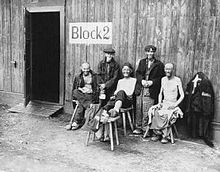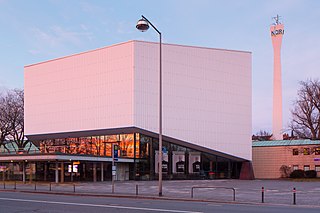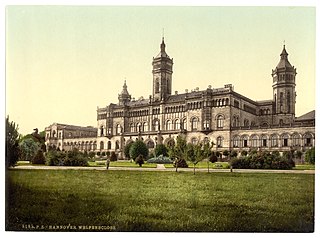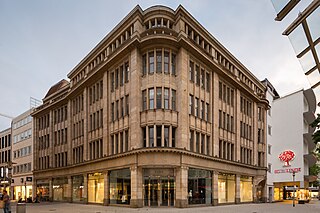
The following is a timeline of the history of the city of Hanover, Germany.

The following is a timeline of the history of the city of Hanover, Germany.
| History of Germany |
|---|
 |


Other cities in the state of Lower Saxony:(de)
Hermann Bahlsen was a German entrepreneur in the food industry as well as the inventor of the Leibniz butter biscuit and founder of the Bahlsen confectionery factory.
The following is a timeline of the history of the city of Hamburg, Germany.
The following is a timeline of the history of the city of Bremen, Germany.

The following is a timeline of the history of the city of Braunschweig (Brunswick), Germany.
The following is a timeline of the history of the city of Chemnitz, Germany.

Linden-Limmer ( ) is the tenth borough (Stadtbezirk) of Hanover, the state capital of Lower Saxony. It became part of the city in 1920. Linden-Limmer is where Hannah Arendt was born. It has 44,941 inhabitants (2020) and consists of the quarters (Stadtteile) of Linden-Mitte, Linden-Nord, Linden-Süd and Limmer.
The following is a timeline of the history of the city of Linz, Austria.

The aerial bombings of Hanover are a series of eighty-eight air raids by Royal Air Force (RAF) Bomber Command and the United States Army Air Forces (USAAF) on the German city of Hanover during World War II. Collectively these air raids killed 6,782 persons, predominantly civilian residents. Around 1,000 aerial mines, 34,000 high explosive bombs, 900,000 incendiary bombs and 50,000 fire bombs were dropped. The most destructive and deadly air raid on Hanover was conducted by the RAF on the night beginning 8 October 1943, killing 1,245 persons, and is an example of carpet bombing of suburban and residential civilian targets laid out in the Area Bombing Directive of 14 February 1942.

The State Radio House of Lower Saxony is a group of buildings owned by the public broadcaster Norddeutscher Rundfunk in Hanover, the state capital of Lower Saxony, Germany.
The hübschefamilies were the third elite class of the Electorate and Kingdom of Hanover in the 18th and early 19th centuries, after the nobility and the clergy. At the time Hanover was in a personal union with the United Kingdom. The group consisted of the higher bourgeoisie and the elite of university-educated civil servants, and played a significant role in the governing of Hanover, often as higher civil servants.

Hugo Thielen is a German freelance author and editor, who is focused on the history of Hanover, the capital of Lower Saxony, in a lexicon of the city, another one especially of its art and culture, and a third of biographies. He co-authored a book about Jewish personalities in Hanover's history.
Waldemar R. Röhrbein was a German historian. He worked as a museum director in Lower Saxony, his last post being from 1976 to 1997 at the Historisches Museum Hannover, and was president of the Homeland Federation of Lower Sachsony. He contributed to encyclopedias about Hanover's history and culture.

Hanover Historical Museum is an historical museum situated in Hanover, the capital of Lower Saxony, Germany. The museum was founded in 1903 as the Homeland Museum of the City of Hanover. Its collections are related to the history of the city, the history of the House of Guelf, and of the state of Lower Saxony.
Dirk Böttcher was a German printer master, author and president of the association of Friends of the Historisches Museum Hannover.

Reimar Dahlgrün was a German pianist, professor at the Hochschule für Musik, Theater und Medien Hannover and journalist.

Christian Heinrich Tramm was a German architect who, in 1850, introduced the Rundbogenstil in Hanover.
Adolf Falke was a German architect, draughtsman, designer, stage designer and municipal politician.

Broyhan House is a residential and commercial building constructed in 1576 in Hanover's historic old town. It is the second-oldest preserved half-timbered building in Hanover, and stands on the cellar walls of an earlier building dating to the 14th century. The house is named after Cord Broyhan, a brewer who lived in an earlier building from 1537 until 1561.
The history of the Jews in Hannover began in the 13th century. In 2009, about 6200 people belonged to the four Jewish communities in Hannover.

Elsbach & Frank was a textile retail business founded in the 19th century in Hanover, the capital of Lower Saxony, Germany. The department store built by the business on the corner of Osterstraße and Große Packhofstraße, called Zum Stern, is the only building in the city centre that survived the air raids on Hanover during the Second World War without major damage. Today, the building houses a branch of the Spanish fashion chain Zara.
This article incorporates information from the German Wikipedia.
{{cite book}}: CS1 maint: location missing publisher (link)published in the 19th century
published in the 20th century
published in the 21st century